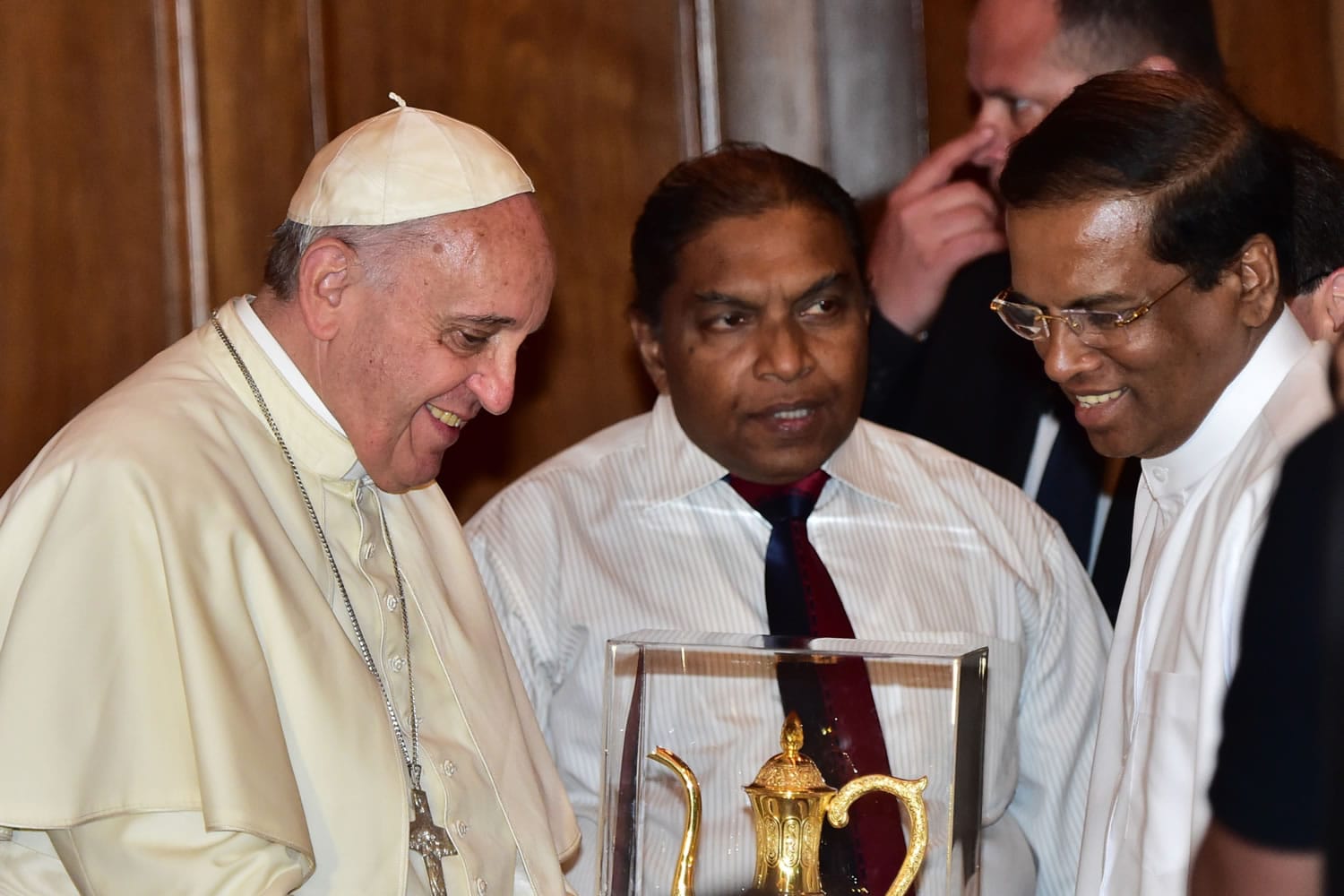Pope Francis on Tuesday began a highly anticipated six-day visit to Sri Lanka and the Philippines. Here are some glimpses of his trip as it unfolds:
WHAT MIRACLE?
When Pope Francis canonizes Sri Lanka’s first saint on Wednesday, he’ll again prove he has little tolerance for pointless rules as he skirts the Vatican’s normal saint-making regulations. While the church traditionally requires two miracles for sainthood, the Vatican never confirmed a second attributed to the intercession of the Rev. Joseph Vaz, a 17th century missionary credited with reviving Catholicism during anti-Catholic persecution by Dutch colonizers. Rather, Francis simply signed off on a decision taken by the Vatican’s saint-making office that Vaz warranted canonization. It’s the same thing Francis did for a far better-known new saint, Pope John XXIII, and is a sign that Francis firmly believes that the faithful need more models of holiness without the technical, time-consuming and costly process of confirming inexplicable miracles.
— By Nicole Winfield, AP writer, Colombo, Sri Lanka
DRUMS AND CHANTS
Sri Lanka’s religious stripes were all on colorful display for a meeting of representatives of the major faiths on the island. Traditional Hevisi drummers set the scene, followed by Buddhist chants, Hindu and Muslim benedictions, an ecumenical prayer by an Anglican bishop, then speeches by a Buddhist monk and the pope. The scene was far different in 1995 when Buddhist leaders boycotted John Paul’s visit to protest his criticism of the Buddhist concept of salvation. In a sign of belonging, Francis sported a saffron-colored robe over his shoulders. Such robes are a cultural sign of honor among Tamils, a mainly Hindu ethnic minority in Sri Lanka.
The Muslim representative at the meeting, Ash-Sheikh M.F.M Fazil, used his speech to condemn the recent terrorist attacks in Paris. Extremists have used many religions as a shelter to cover their own evil deeds and lies, he said. “We need to understand each others’ faiths” and support each other to build a healthy nation, the sheik said.



